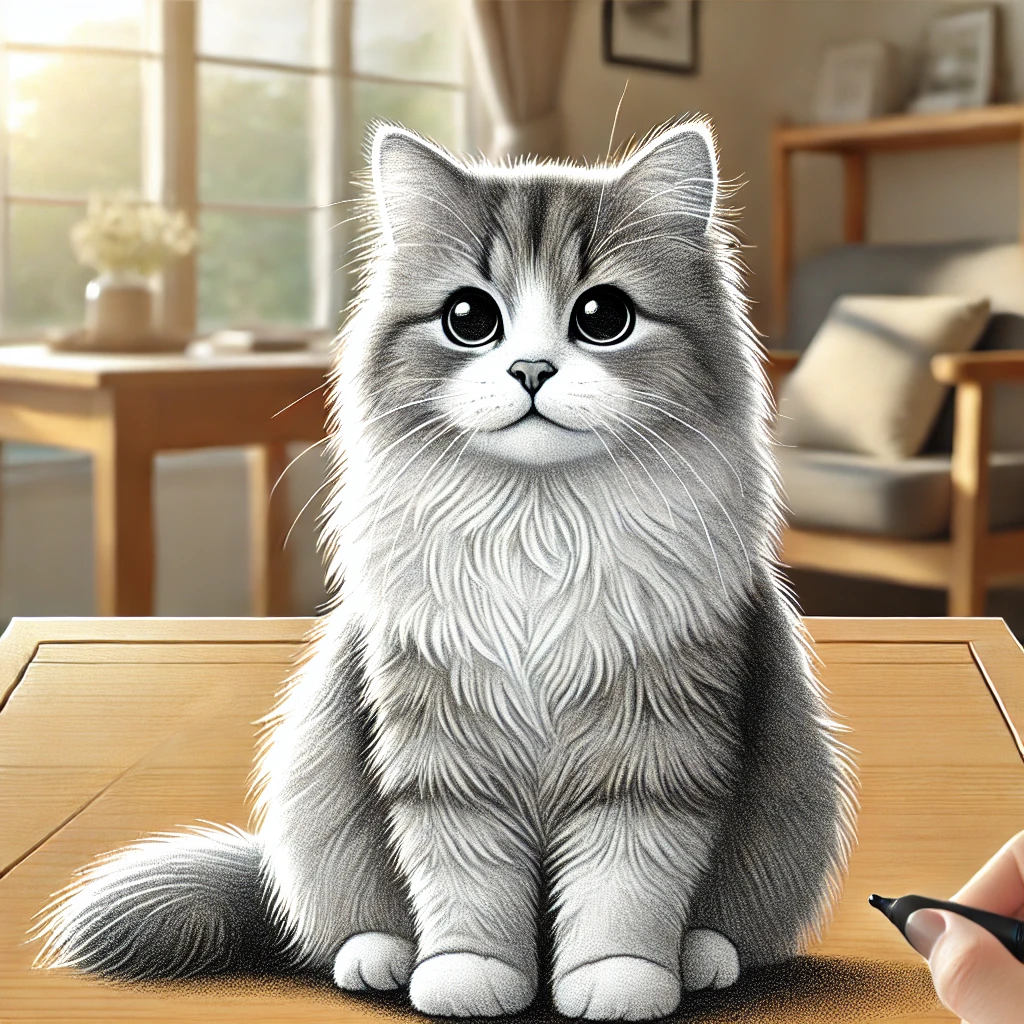Drawing:a4z_-ymtkr8= Cat have been a popular subject for artists throughout history due to their elegant form and expressive personalities. From ancient depictions to modern-day sketches, the allure of capturing a cat’s essence on paper is timeless. This article explores various aspects of drawing cats, from techniques to popular styles.
Table of Contents
2. Historical Significance of Cats in Art
Throughout history, cats have been featured in numerous artworks, symbolizing everything from mystery to elegance. Ancient Egyptian art, for instance, showcases cats as revered beings. Drawing:a4z_-ymtkr8= Cat This trend continued into medieval times and persists today, reflecting the cultural importance of felines.
3. Understanding Cat Anatomy for Drawings
A fundamental part of drawing a cat is understanding its anatomy. A typical domestic cat has a flexible spine, sharp features, and elegant posture, making it a great subject for realistic and stylized drawings alike. Mastering their body structure is key to creating lifelike art.
4. Essential Tools for Cat Drawings
Drawing:a4z_-ymtkr8= Cat To produce high-quality cat drawings, artists use a variety of tools. Pencils, charcoal, ink, and pastels are popular mediums. Each tool lends itself to different styles, whether one aims for detailed realism or simple, expressive sketches. Drawing:a4z_-ymtkr8= Cat
5. Sketching Techniques for Beginners
Drawing:a4z_-ymtkr8= Cat For those new to drawing, starting with simple sketching techniques is crucial. Begin by drawing the basic shapes of a cat—such as circles for the head and body—and then refine the form by adding details like ears, eyes, and fur texture. This gradual approach leads to a more accurate depiction.
6. The Importance of Capturing Expression
Drawing:a4z_-ymtkr8= Cat A cat’s expression is one of its most charming features. Whether it’s a playful look, a relaxed demeanor, or an intense stare, capturing the right expression is vital. Artists often focus on the eyes to convey emotion, as they are one of the most expressive parts of a cat’s face.
7. Detailed Fur Techniques
Drawing realistic fur requires attention to detail. Start with light, directional strokes to create layers, making the fur appear soft and textured. This technique helps build depth and gives the drawing a more lifelike quality. Fur also changes in density across the body, requiring careful observation. Drawing:a4z_-ymtkr8= Cat
8. Using Light and Shadow in Cat Drawings
Lighting plays an important role in drawing cats, especially in realistic renditions. By applying shadows and highlights, artists can create the illusion of three-dimensional form. Pay attention to where light naturally hits the cat’s body to ensure accurate shading.
9. Drawing Different Cat Breeds
Each cat breed has distinct physical features, from the sleek Siamese to the fluffy Persian. Artists can enhance their skills by learning to differentiate and draw these traits. For example, drawing a Persian requires mastering fluffy fur, while a Siamese involves sharper, more streamlined features.
10. Creating Stylized Cat Drawings
Beyond realism, many artists enjoy creating stylized or cartoonish cat drawings. These drawings may exaggerate features like the eyes or tail, creating a unique artistic expression. This approach is often seen in comics or children’s books.
11. The Role of Perspective in Cat Art
Perspective in cat drawings helps convey depth and dimension. By adjusting the angle from which a cat is drawn—whether from the front, side, or top-down—artists can create a dynamic piece that engages viewers more effectively.
12. Popular Themes in Cat Drawings
Drawing:a4z_-ymtkr8= Cat Many cat drawings feature common themes, such as cats playing, hunting, or resting. These everyday behaviors provide rich opportunities for artistic exploration. Capturing a cat’s natural movements makes the drawing more relatable and lively.
13. Combining Cats with Other Elements
Artists often combine cats with other elements, such as landscapes or household objects. This adds complexity to the drawing and tells a deeper story. Drawing:a4z_-ymtkr8= Cat A cat sitting by a window, as shown in the featured image, can evoke a sense of tranquility and domestic comfort.
14. The Influence of Digital Art on Cat Drawings
With the rise of digital art, many artists now use graphic tablets and software to draw cats. Digital tools offer new possibilities, such as easy editing and layering, Drawing:a4z_-ymtkr8= Cat while maintaining the same foundational drawing skills needed in traditional art. Drawing:a4z_-ymtkr8= Cat
15. Learning from Famous Cat Artists
Many famous artists, like Steinlen and Balthus, have been known for their cat drawings. Studying their works can offer insights into different styles and techniques. These artists often captured the playful and mysterious nature of cats in innovative ways.
16. How to Draw a Cat’s Face
A cat’s face is often the focal point of the drawing. Start with a rough outline of the head, then focus on the features, especially the eyes and nose. Attention to symmetry and proportions will ensure a realistic result. The ears should also be placed correctly to match the perspective.
17. Advanced Techniques for Professional Artists
For more experienced artists, advanced techniques like cross-hatching, stippling, and blending can add texture and depth. These methods require patience but can greatly enhance the realism of a drawing, especially in complex areas like the fur or the eyes. Drawing:a4z_-ymtkr8= Cat
18. Final Touches: Bringing a Cat Drawing to Life
Once the main aspects of the drawing are complete, artists add final touches to perfect the piece. This could involve refining the shadows, enhancing highlights, or adding small details such as whiskers or reflections in the eyes. These final adjustments can elevate the drawing from good to exceptional. Drawing:a4z_-ymtkr8= Cat
19. Common Mistakes in Cat Drawings and How to Avoid Them
One of the most common mistakes in cat drawings is incorrect proportions, particularly in the head or body size. Another frequent error is neglecting the texture of the fur. Paying close attention to reference images and practicing regularly can help avoid these pitfalls.
20. Tips for Drawing Cats in Motion
Drawing a cat in motion, such as running or jumping, requires understanding how a cat’s body moves. Studying videos or images of cats in action can help artists capture the fluidity and grace of these movements, making the drawing more dynamic.
21. Drawing Cats from Different Angles
Drawing a cat from different angles, such as from behind or above, presents a challenge for artists. Each viewpoint offers a new perspective, and understanding how the body shifts from various angles is crucial for maintaining accuracy.
22. Conclusion: The Art of Drawing Cats
Drawing cats offers endless possibilities for artistic expression. Whether aiming for a realistic portrayal or a playful, stylized sketch, mastering the techniques mentioned above will help artists create captivating feline art. As with any artistic endeavor, practice and patience are key to improvement.




